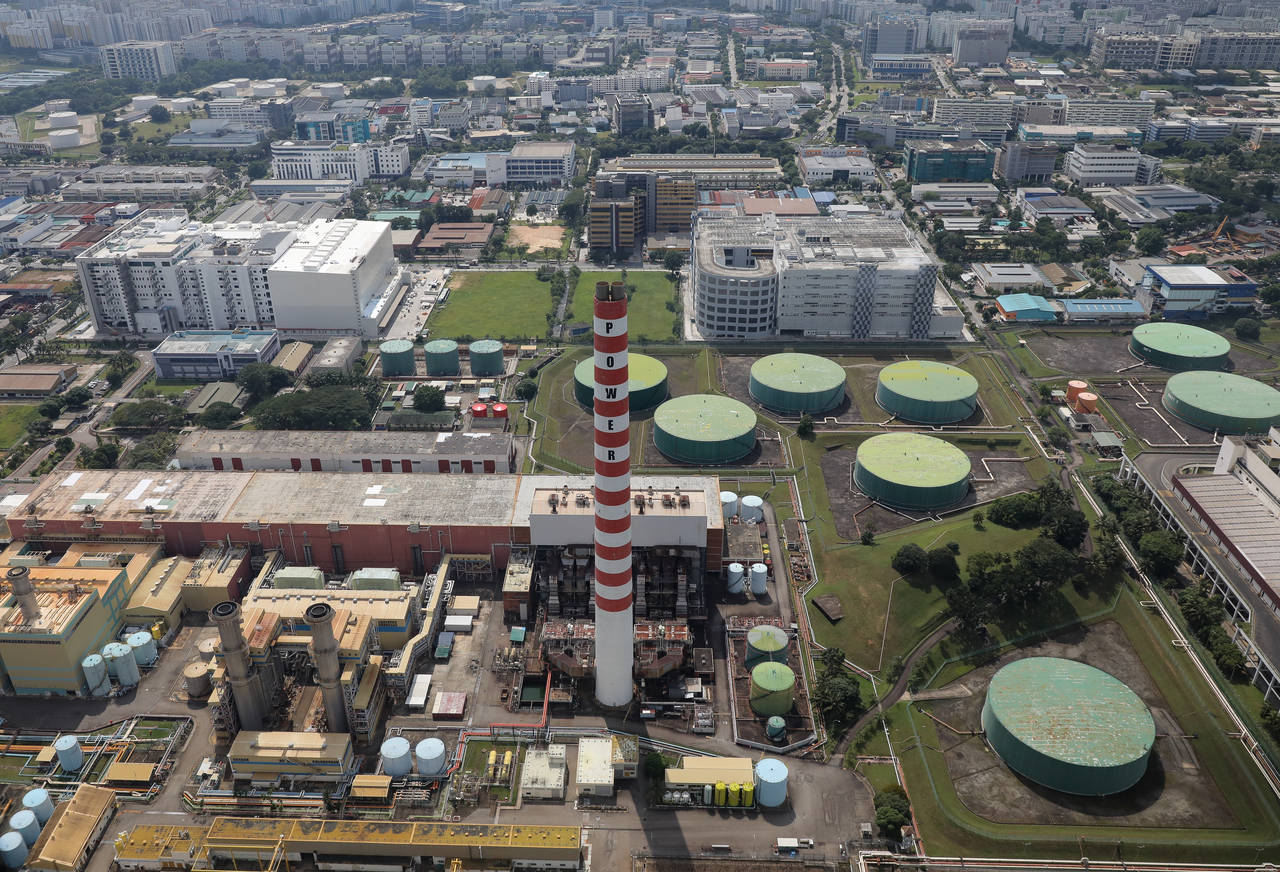Nearly a quarter of S'pore's power generation capacity due for replacement in next 5 years: EMA
Sign up now: Get ST's newsletters delivered to your inbox

The power sector contributes about 40 per cent of the Republic's carbon emissions.
PHOTO: ST FILE
Follow topic:
SINGAPORE - With almost a quarter of Singapore's power generation capacity expected to reach the end of its lifespan over the next five years, the Energy Market Authority (EMA) is studying how future gas plants entering the power system before 2030 could impact its target for net zero emissions by or around 2050.
These generators that currently run on natural gas, a less polluting fossil fuel that produces 95 per cent of the country's energy, will remain the "backbone of Singapore's electricity generation" even as the power sector decarbonises, the industry regulator said in a tender on Sept 8.
The power sector contributes about 40 per cent of the Republic's carbon emissions so new combined cycle gas turbines (CCGTs) and smaller generation units could affect the nation's plans to reduce emissions to reach a peak of 65 million tonnes of greenhouse gas emissions by 2030, it added.
CCGTs produce electricity from natural gas and can potentially do so with low-carbon alternatives such as a hydrogen blend in the future, when this becomes available.
About 2.8 gigawatts (GW), or roughly 23 per cent of Singapore's power generation capacity in 2021, will be due for replacement in the next five years, an EMA spokesman told The Straits Times.
The technical consultancy tender aims to understand the potential emissions intensity of the latest natural gas generation technologies, she said.
This comes after a report, which was commissioned by EMA, said in March that it is realistic for the power sector to bring down its planet-warming emissions to net zero by 2050 in ways that will neither compromise Singapore's energy security nor affordability.
Strategies that the report recommended include intensifying research in cleaner energy sources such as hydrogen and geothermal.
Still, natural gas is needed to ensure "a reliable supply of electricity" amid the transition to cleaner and renewable energy sources, the EMA spokesman said.
Dr Victor Nian, chief executive of independent think-tank Centre for Strategic Energy and Resources, said imposing a carbon emission intensity limit demonstrates EMA's commitment to decarbonise the power sector, noting that achieving this requires a phased approach.
"However, before our industry can adopt hydrogen and ammonia, we still need to address the present gaps and uncertainties, such as the lack of infrastructure supporting a hydrogen or ammonia economy, technology readiness and commercial viability, future cost of hydrogen and ammonia relative to the cost of fossil fuel, and security of supply," he added.
In addition, there are technology research and development efforts around carbon capture and sequestration - the process where planet warming carbon dioxide is captured before it reaches the atmosphere - which can also help reduce the carbon intensity of CCGT power generation without the need to burn or blend hydrogen or ammonia fuels, he said.
"But due to the lack of appropriate land space and geological storage reservoir, Singapore might need to 'export' its captured carbon dioxide to neighbouring countries with such storage reservoir available, and this will again be subject to geopolitical uncertainties," he said.
At the same time, EMA said it will continue to ramp up solar deployment to meet its target of producing 2 GW-peak of solar energy by 2030, which could generate enough energy to meet the annual electricity needs of 350,000 households.
Given the land constraints, several reservoirs, vacant land and rooftops around the island have been tapped for a roll-out of solar panels.
This would meet about 4 per cent of Singapore's current electricity demand, EMA said.
Meanwhile, it is looking at initiatives to improve the efficiency and sustainability of gas-fired power generation.
In 2020, it launched an ongoing incentive scheme to encourage power generation companies to further reduce carbon emissions by adopting new and more energy-efficient CCGTs with larger capacities.

